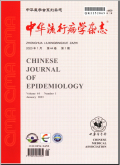摘要在临床随访研究中,风险比(HR)是衡量组间差异最常用的指标,但由于HR是两组间的风险率之比,含义较抽象,无法对患者的生存情况做出直观的解释,并且在使用过程中需满足比例风险假定.而此时,限制平均生存时间(RMST)可以作为一种相对有效的指标或统计量,本文介绍基于RMST的统计分析方法,包括RMST及其差值的估计、假设检验以及回归分析,并通过两个实例说明了RMST在数据分析中的应用.结果 显示RMST可作为有效的分析工具,其结果易于解释,并且当比例风险假定失效时,在组间差异的比较上相对于HR更有效.因此,在疾病疗效评价和预后分析的过程中,建议RMST应随HR同时给出,两者相互配合、相互补充,共同反映数据的特征.
更多相关知识
abstractsIn clinical follow-up studies,hazard ratio (HR) is routinely used to quantify the differences between-groups,however,it is being estimated by the Cox procedure.HR,the ratio of two hazard functions has abstract meaning only and is in lack of the context to give an intuitive explanation of the survival of patients and the assumption of proportional hazards (PH) must be satisfied.Under this context,the restricted mean survival time (RMST) can be used as a relatively effective measure or index of statistics.This paper introduces the RMST-based statistical analysis methods,including estimation of RMST and its difference,hypothesis testing and regression analysis.The application of RMST in data analysis is also introduced.All the evidence demonstrates that RMST can be used as an effective analytical tool with straightforward interpretation.RMST is also more effective than HR in comparing differences between groups,when non-PH is observed.Therefore,RMST is suggested to be stated along with HR in the process of disease efficacy evaluation and prognosis analysis.Cooperation and complement of the two,a precise reflection on the characteristics of data can be expected.
More相关知识
- 浏览325
- 被引6
- 下载153


相似文献
- 中文期刊
- 外文期刊
- 学位论文
- 会议论文



 换一批
换一批 换一批
换一批



